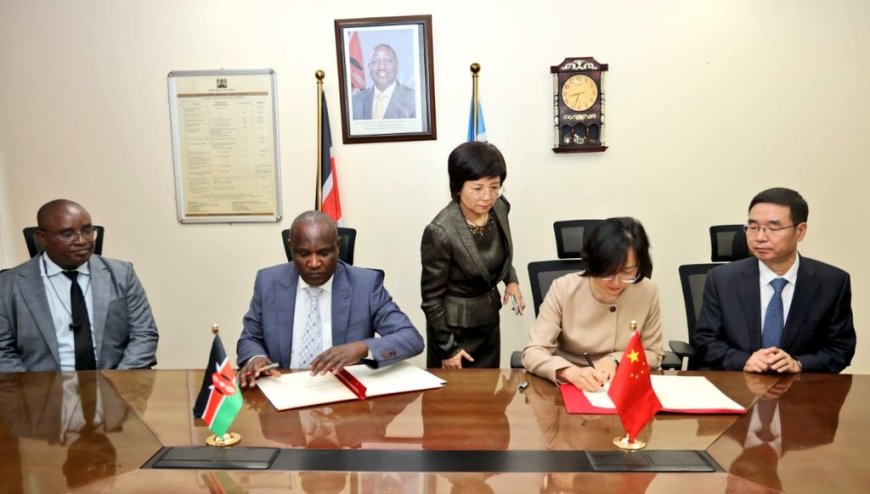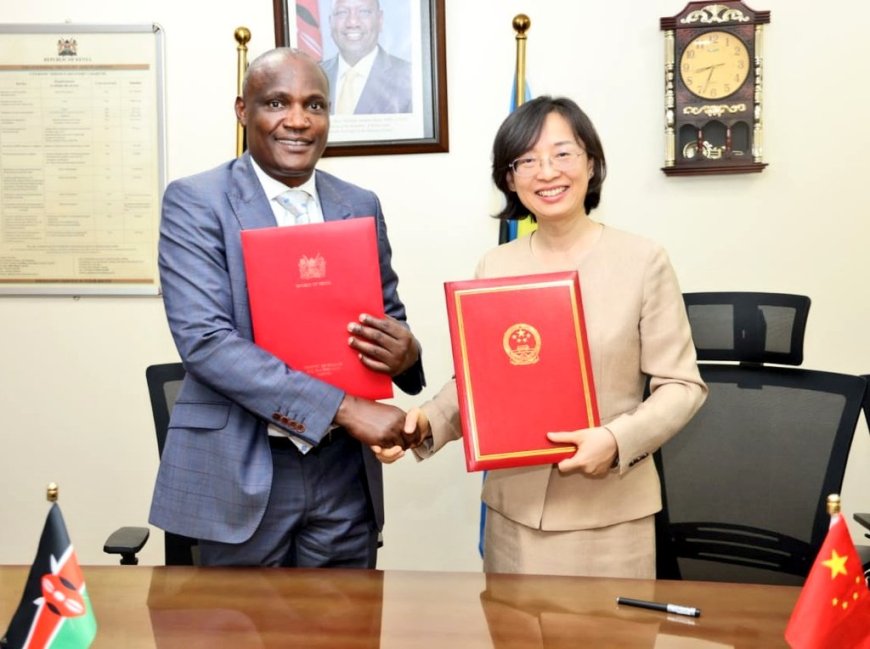Details Of Ksh1.8 Billion Kenya Has Secured From China
The agreement was signed on Thursday morning, March 27, at the Treasury Building by National Treasury Cabinet Secretary (CS) John Mbadi on behalf of the Kenyan government

Kenya has secured a Ksh1.8 billion (RMB 100 million) grant from the People’s Republic of China to enhance its healthcare sector.
The agreement was signed on Thursday morning, March 27, at the Treasury Building by National Treasury Cabinet Secretary (CS) John Mbadi on behalf of the Kenyan government, alongside Guo Haiyan, China’s Ambassador to Kenya.
The grant will finance the upgrading of key hospitals across the country, including Londiani Referral Hospital, Baringo County Referral Hospital, Kilifi Hospital, Misikhu Hospital, Bildad Kagia Hospital, and Kaimosi Farmers Training College.
N.B.: A grant agreement outlines the terms and conditions of the funding, ensuring both parties understand the scope, amount, and purpose of the grant.

Treasury Cabinet Secretary John Mbadi with the Chinese Ambassador to Kenya, Guo Haiyan, after signing the grant agreement on March 27, 2025. /NATIONAL TREASURY
“The grant, a significant boost to Kenya’s healthcare sector, will fund the upgrading of key hospitals across the country,” the Ministry stated.
CS Mbadi expressed appreciation for China’s continued partnership, highlighting its contributions to Kenya’s economic growth and overall development.
He noted that the longstanding relationship between the two nations spans economic, political, and socio-cultural cooperation, fostering substantial progress in Kenya’s national development agenda.
The Chinese government’s ongoing support underscores the strong bilateral ties between Kenya and China, further solidifying their collaboration in key sectors.
This comes weeks after Kenya secured a Ksh 6.5 billion ($50 million) grant from the United Nations (UN)-backed Green Climate Fund (GCF) to enhance climate resilience and promote sustainable development in Kenya.
China remains Kenya’s largest bilateral development partner, having extended financial support through loans and grants amounting to Ksh907.3 billion, of which Ksh867 billion is in loans, while Ksh40.3 billion has been provided as grants.
Key Infrastructure Projects Funded by China
Over the years, China has played a crucial role in Kenya’s infrastructure development under the Forum on China-Africa Cooperation (FOCAC) and the Belt and Road Initiative (BRI). Some of the major completed projects funded by China include:
-
Mombasa-Nairobi Standard Gauge Railway (SGR)
-
Nairobi-Naivasha Standard Gauge Railway
-
Nairobi-Thika Superhighway
-
Eastern, Northern, and Southern Bypasses in Nairobi
"We applaud China for the tangible and practical contribution to social and productive sectors of our economy through this grant," Foreign Affairs Principal Secretary Korir Sing'oei said in response to the latest donation.
In September 2024, during President William Ruto's state visit to China, Kenya secured a KSh 40 billion (approximately $270 million) loan from the Chinese government. The funds are earmarked for completing 15 stalled infrastructure projects spread across more than ten counties, with the goal of boosting regional development and economic growth.
With the government signaling that borrowing will continue, the country’s debt to China is expected to rise further. As of March 2024, Kenya owed China approximately Ksh 920.52 billion (around $7.2 billion), primarily for infrastructure projects such as roads, railways, and port developments.
In contrast, France, Kenya’s second-largest bilateral creditor, had extended loans totaling about Ksh 116.69 billion (approximately $902.4 million), mainly funding urban development and water projects.
Despite China's significant role, multilateral institutions like the World Bank remain Kenya’s largest overall creditors, with outstanding loans totaling roughly Ksh 1.8 trillion (around $14 billion) as of March 2024.
This week, President Ruto’s administration confirmed that it would continue relying on borrowing to finance its budget, effectively abandoning its earlier target of balancing expenditures with revenue by 2027.







